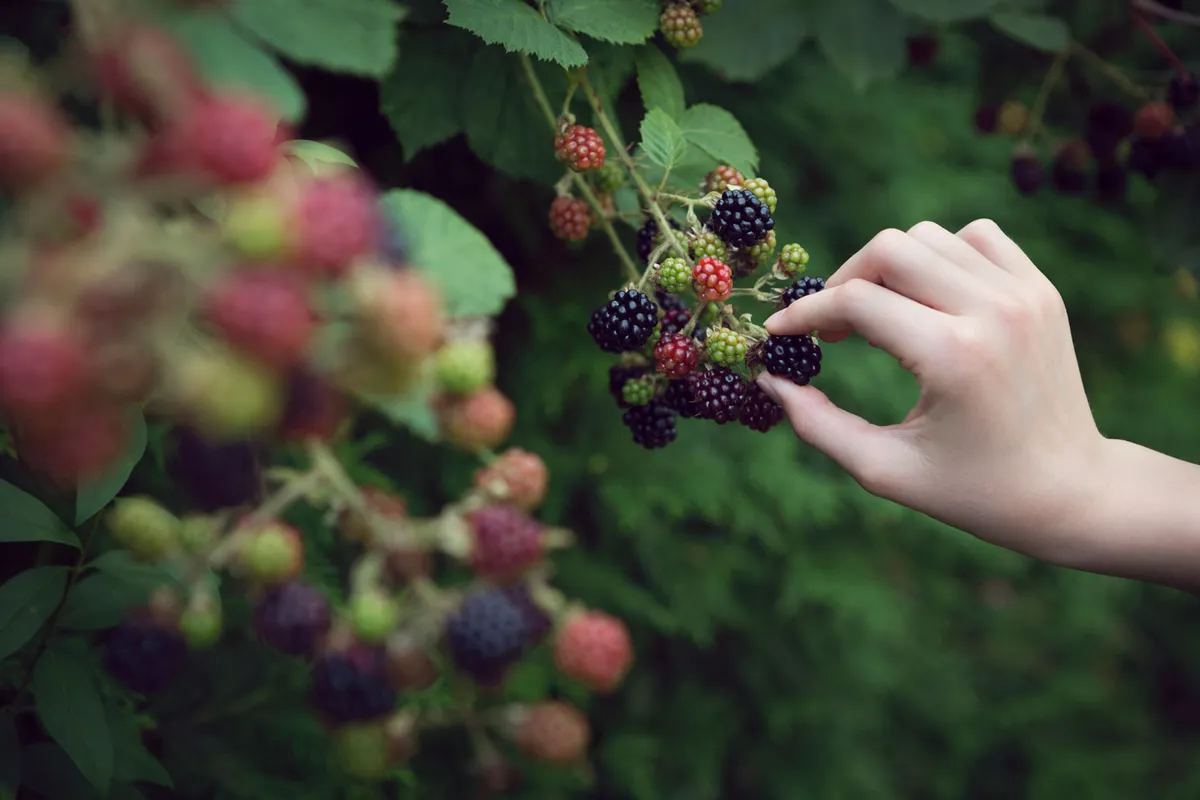Few late-summer activities are as typically British as rooting through a hedgerow in search of blackberries. The hardy brambles – blackberry bushes – that grow the plump little fruits thrive anywhere from dense woodlands and thick scrub to field edges and country lanes, making the blackberry extremely common.
Blackberry picking is a particularly good introduction to foraging, as the fruits are easily recognisable and relatively simple to gather. A popular childhood activity, blackberry picking is a common introduction to foraging for many people – with hands stained purple by blackberry juice and punnets full of delicious fruit to eat as a reward!
Our guide explains how to forage for blackberries in Britain, with a few key details regarding where the tart little fruit can be found and delicious recipe ideas.
Learn more about plants you can eat and how to forage responsibly with our seasonal foraging guide, plus we've rounded up a selection of foraging courses and identification books.
When are blackberries in season?
The first early blackberries start appearing in July in the south of England but August (and summer holidays) is the traditional blackberry month while September and October can also be good picking months depending on the location and weather.
Young blackberries form after the pink-white flowers have been pollinated. They begin as hard green clusters before turning red, then black, swelling all the time. Blackberries are ripe when black, plump and shiny.

Is it safe to eat wild blackberries in the UK?
It is completely safe to eat wild blackberries found in the UK, although it is sensible to pick them away from busy roads where they could become contaminated with pollutants. But not all blackberries taste the same – some will be sweet, others tart or even bitter due to location or possibly subspecies. Part of the fun of blackberrying is that you never know quite what flavours you'll get.
The blackberry should not be confused with the black raspberry, which looks almost identical. The easiest way to tell the difference is by the core. Blackberries will always have a white core, with part of the stem still attached, whereas black raspberries are hollow in the centre as the stem is left behind when picked. Black raspberries are a treat to find though – they are less tart than blackberries and make excellent jams.
What are the best places for picking blackberries
Brambles are usually found in a tangled straggly clump, with prickly, toothed leaves that turn reddish green in the autumn.

Brambles are incredibly common and can be found in most woodlands and hedgerows in lowland Britain. Finding the best blackberry patch is a question of trial and error. Some will naturally be sweeter and more flavoursome than others. But all will work well in jams and other recipes.
When picking blackberries, avoid busy roads where the berries could be contaminated by pollutants from cars. Also, be wary of hedgerows bordering fields of crops that might have been sprayed with insecticides and pesticides. It's best to avoid picking blackberries that are low-down on the bush, where they might have been peed on by dogs etc.
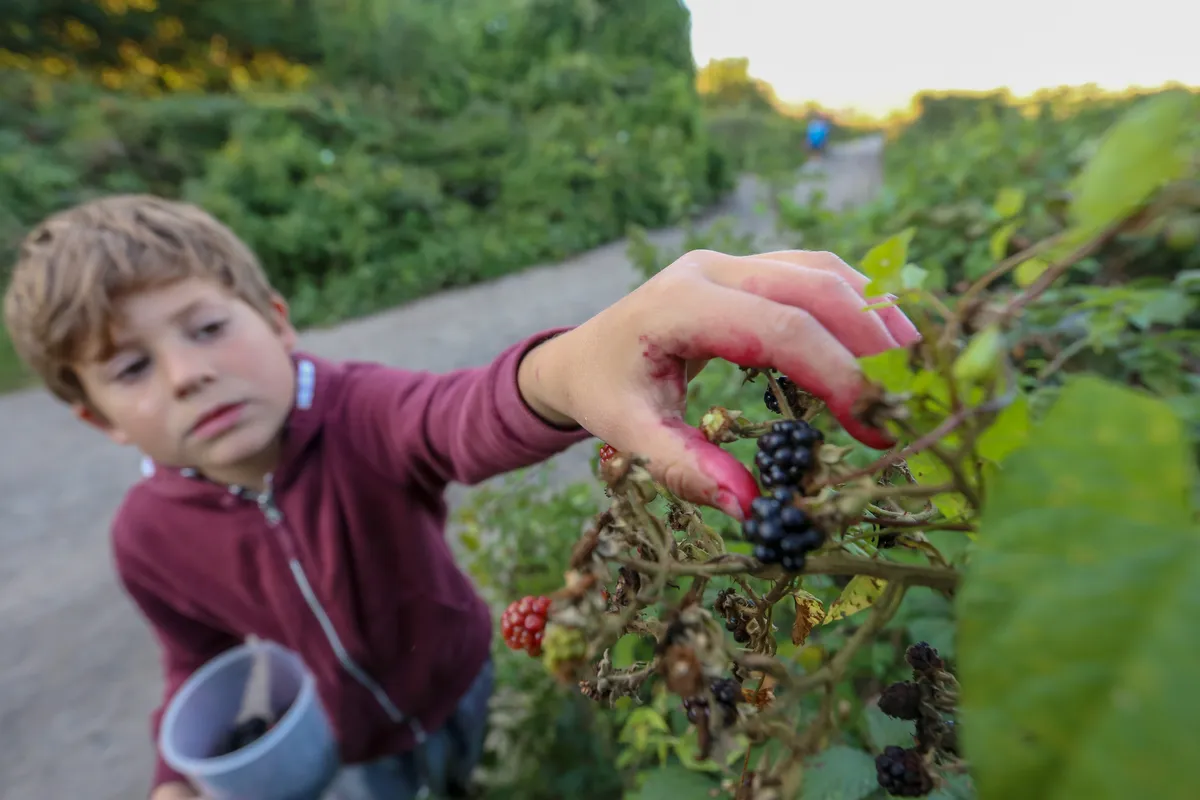
You will often find good crops of blackberries along country lanes but be extremely careful of traffic – only pick in stretches where you and any potential drivers can see for long distances. Avoid picking blackberries on bends.
Lastly, do not completely strip a hedgerow of berries – leave at least half for the local wildlife to enjoy.
Why blackberries are good for wildlife
For many gardeners, brambles are a pain. They have deep roots, grow quickly in summer and dominate hedges and borders if left unchecked. They also have agonising thorns to hurt the unwary – particularly when walking overgrown footpaths. However, the blackberry and its flowers and fruit provide a myriad of habitats and food for a huge variety of wildlife.
Bramble flowers are valuable for a range of bees, hoverflies, butterflies and other pollinators. Brambles belong to the Rubus genus, part of the wider Rosaceae family (roses) and the pale pink flowers resemble those of wild roses.

The blackberries themselves are eaten by birds and mammals and provide a vital source of food for those creatures that need to build up their reserves of fat in order to hibernate through the winter. Watch a blackberry bush for any length of time and you'll also see wasps, flies and butterflies drinking from the ripe fruit.
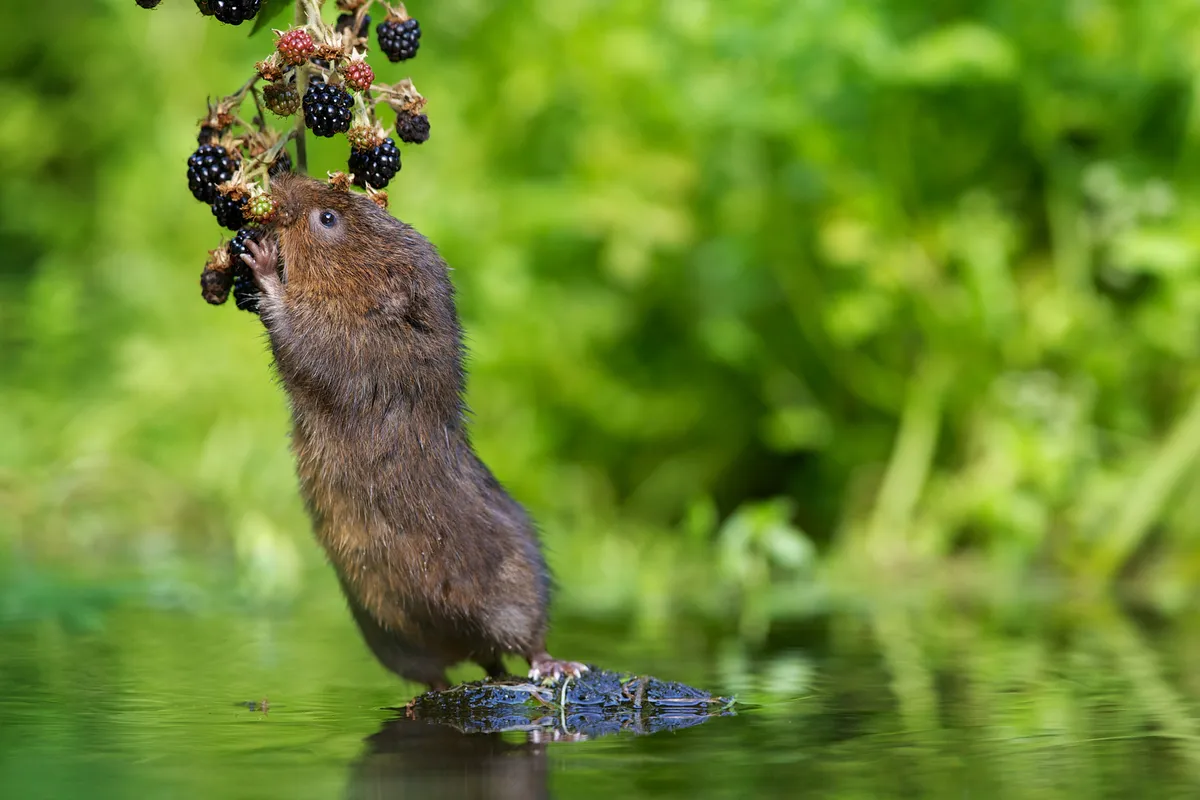
Just as importantly, the tangled bramble bushes create dense thickets that provide shelter and nesting sites for small mammals, birds and insects. In woodlands brambles can create a thorny barrier to deer, which would otherwise browse any new tree seedlings. A new tree eventually emerges from the bramble thicket, hopefully too tall to be munched by the deer.
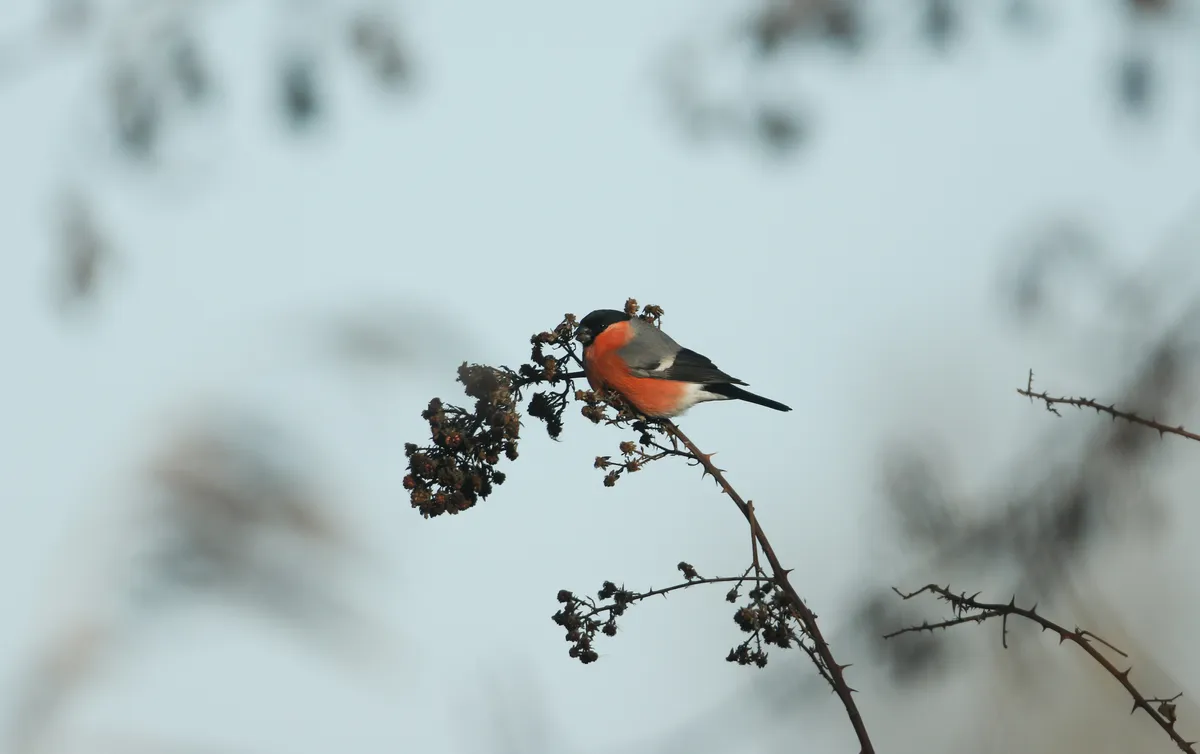
Some people even consider the bramble to be a carnivorous plant. Animals with woolly fleeces such as sheep can become trapped on the bramble thorns and die. The decomposing corpse then provides the plant with nutrients for many months ahead. A plausible theory?
How to clean blackberries
Once you've brought your blackberries home, wash well with cold water and leave to soak with a little salt to kill any bugs. Fresh blackberries will last a day or two but blackberries ripen quickly - losing flavour and condition, so if you have a glut to use up it is worth freezing. You can stew with a little sugar and puree, again freezing or keeping in the fridge – or make into a very pleasant bramble jam.
How to freeze blackberries
Blackberries freeze well and can be used throughout winter in crumbles and pies. Freezing them will also help kill any bugs. The best way to freeze the fruit is to spread them out on a trays and freeze before bagging them. This means the individual fruit keep their shape and do not freeze into one big clump. If you have a big harvest of blackberries, freeze them in batches.
Best blackberry recipes
Use up a glut of blackberries with these easy recipes.
How to make blackberry jam
The simplest and most enjoyable way to store blackberries is to make blackberry jam. What better way to enjoy the flavours of summer and autumn all the way to next spring?
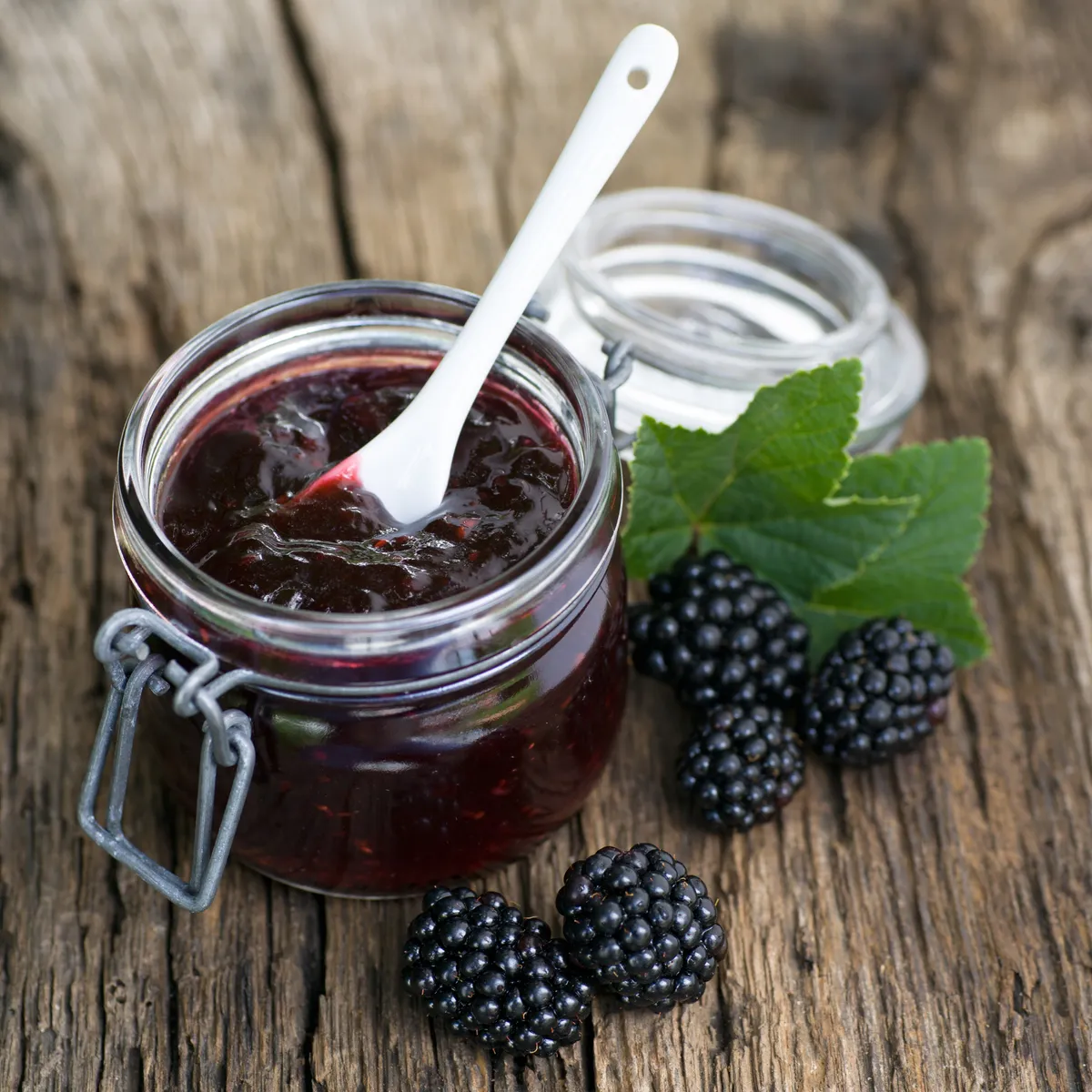
The simplest recipe requires:
1kg (2.2lb) blackberries
800-900g (2lb) granulated sugar,
juice of 1 lemon.
- Simmer the fruit and lemon juice until soft.
- Sieve to remove the pips.
- Reheat the fruit pulp and stir in the sugar until dissolved.
- Boil gently until the jam reaches setting point (place a drop of two of jam on a cold plate and run a finger through it. If the jam 'wrinkles', it will set when cool).
- Pour into warm clean jars and seal.
How to make blackberry and apple mini pies
Make these fruity mini pies using freshly foraged blackberries.
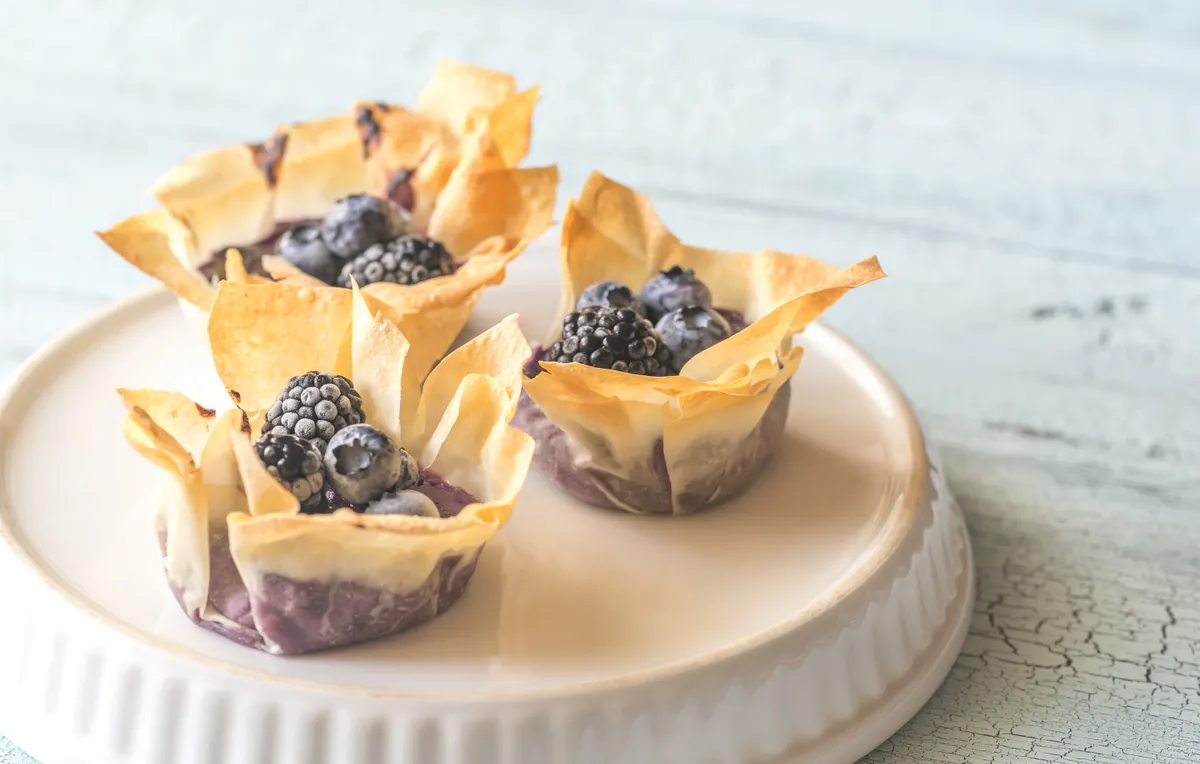
Apple and blackberry crumble squares
Like classic fruit crumble but in a cuttable, transportable bar, these delicious crumble squares are perfect for a summer picnic.

How to make an apple and blackberry sorbet
This fruity sorbet recipe uses golden syrup instead of granulated sugar gives to give it a soft texture. If you can, use blackberries that you’ve picked yourself from the hedgerow – they taste far more intense than the big fat ones you buy in the shops.
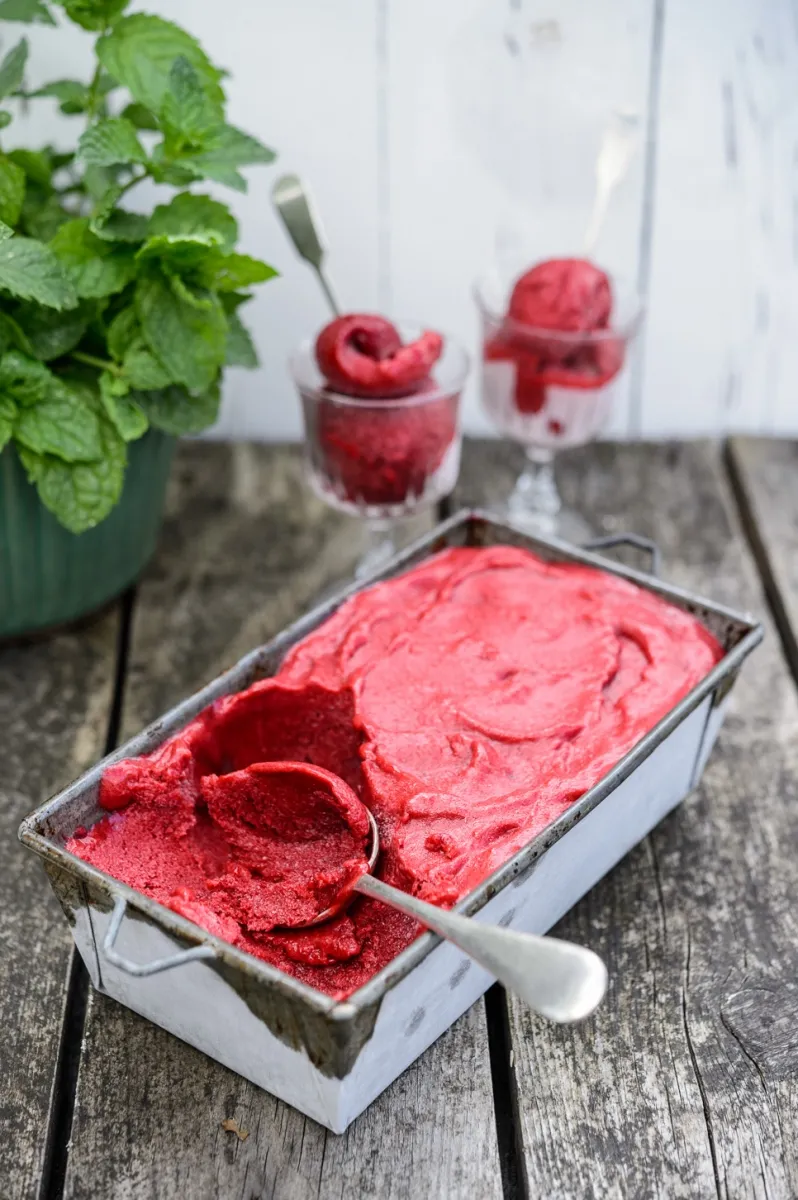
How to make a blackberry Cobbler
This simple recipe is quick and easy to make and a great way for all the family to enjoy this season’s blackberries.
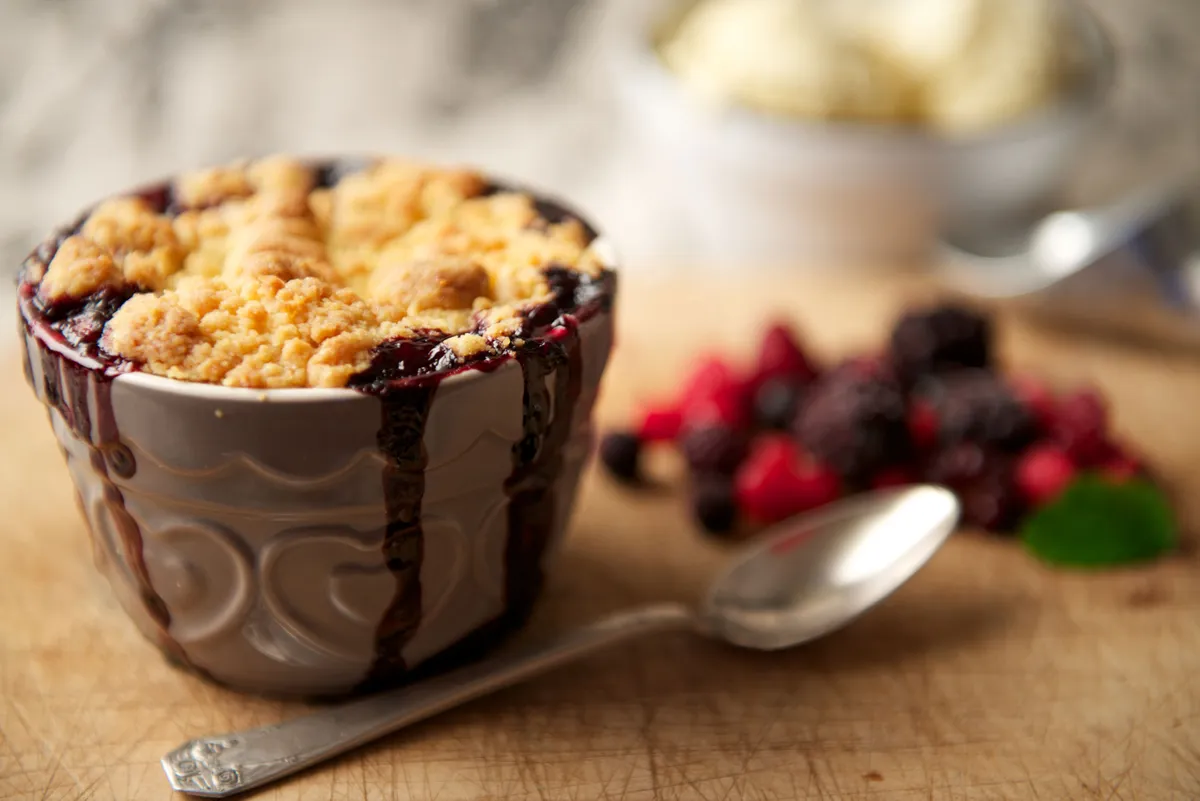
How to make blackberry coulis
This blackberry coulis uses only three ingredients and freezes well, making it the perfect recipe to use up the blackberries you’ve picked during the summer months- keep a batch in the freezer and use it as a topping the next time you make pancakes or chocolate fudge cake
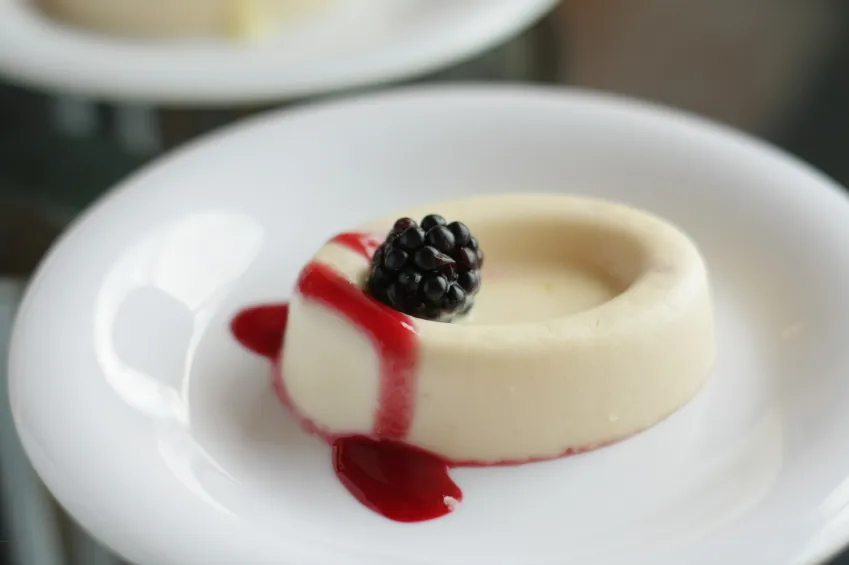
How to make blackberry and apple crumble
This classic crumble is easy to make and a perfect recipe for the late summer months, when hedgerow blackberries are abundant.
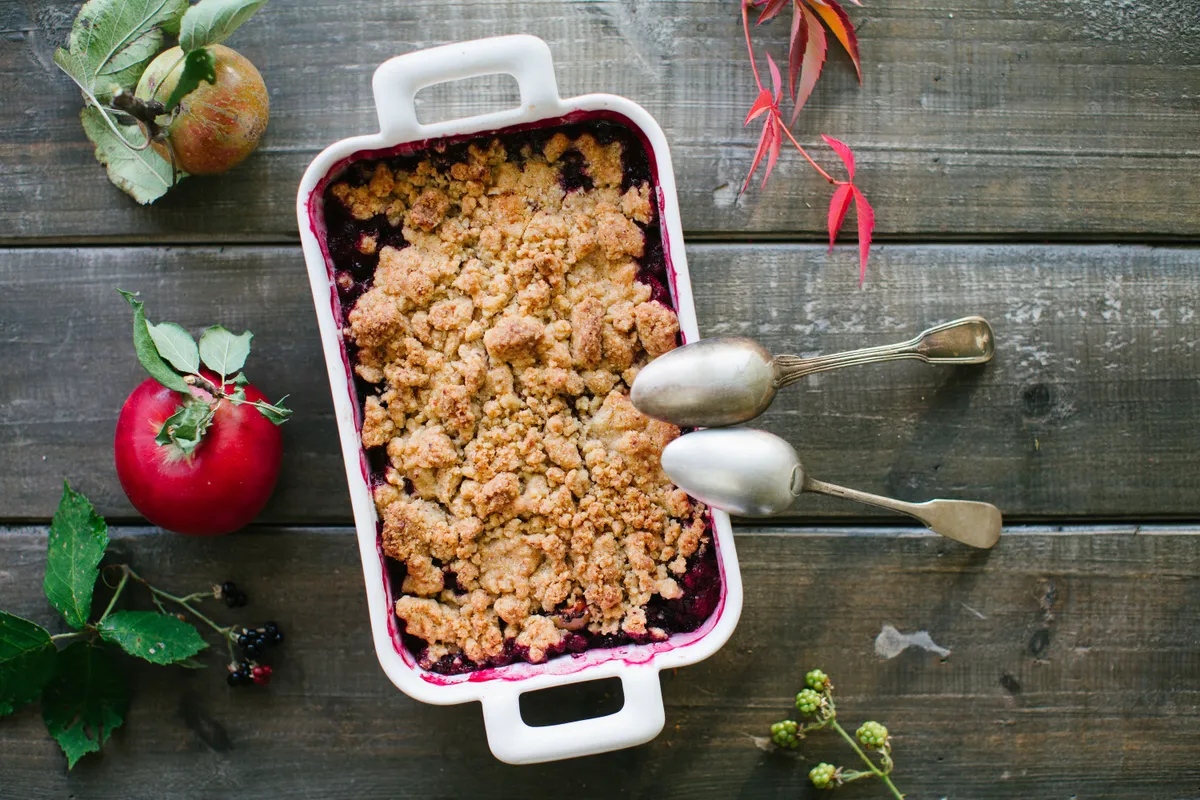
How to make blackberry vinegar
If you love balsamic vinegar you’ll love this recipe – it’s equally useful and extremely cheap to make using blackberries you’ve picked yourself. It's great in salad dressings or used as a cordial to treat colds.
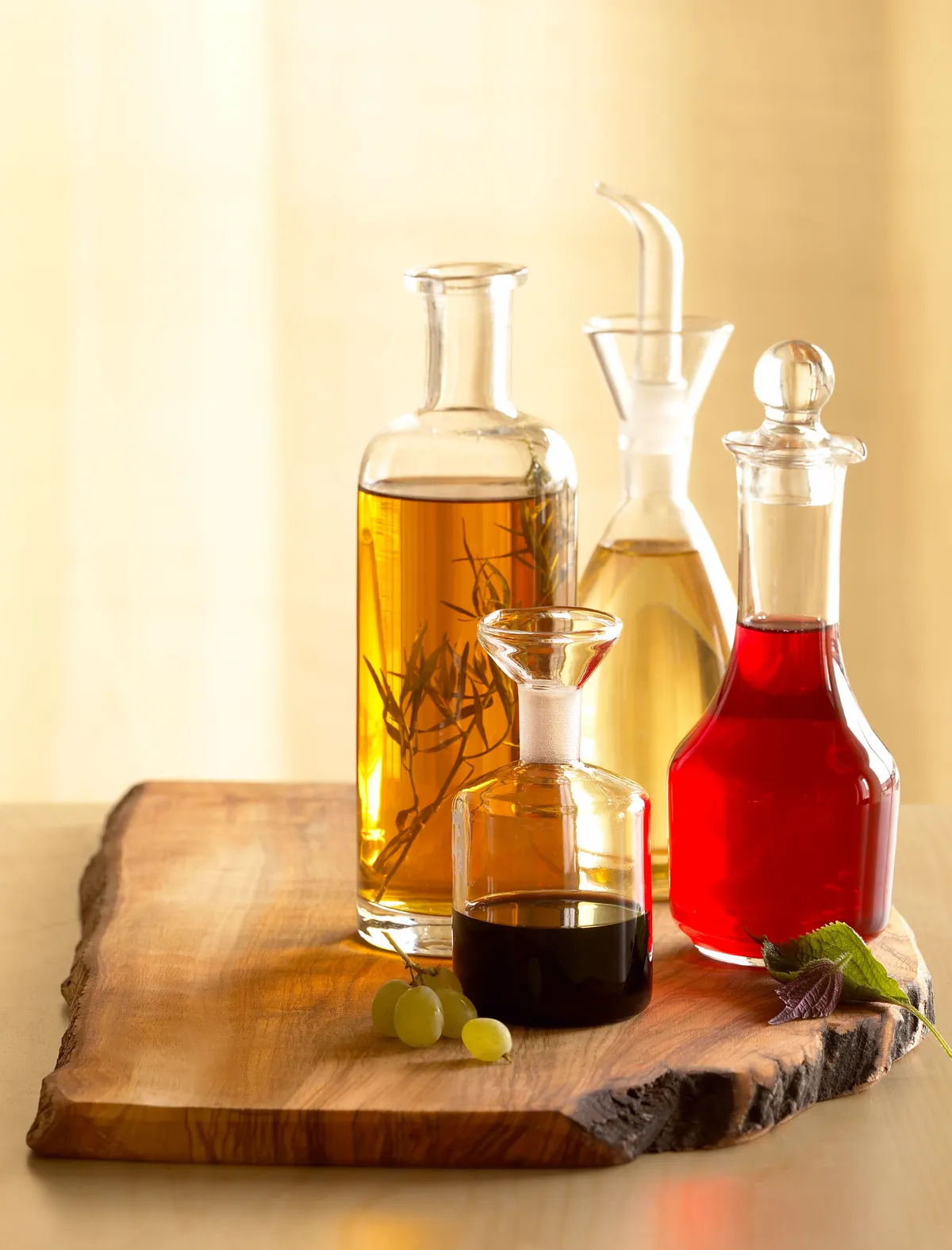
How to make blackberry and coconut tray bake
You can find blackberries in hedgerows, in gardens, woodlands and parks to make this easy tray bake.

Blackberry facts: history and folklore
The devil ruins blackberries after Michaelmas
One of the most famous English folk stories states that blackberries should not be picked after Michaelmas Day as the devil has urinated on them, angry after he fell from Heaven onto a blackberry bush. The legend has some truth as wetter and cooler weather in late October often allows the fruit to spoil, but it should not be taken literally – blackberries picked in late October can still be very tasty!
Bramble thorns caused the downfall of one Greek hero
The Greeks enjoyed blackberries and believed them to be a cure for mouth and throat diseases. According to Greek mythology, the hero Belleraphon was thrown into brambles after he dared to ride the Pegasus to Mount Olympus. He was blinded by the thorns in his fall and wandered alone and outcast thereafter.
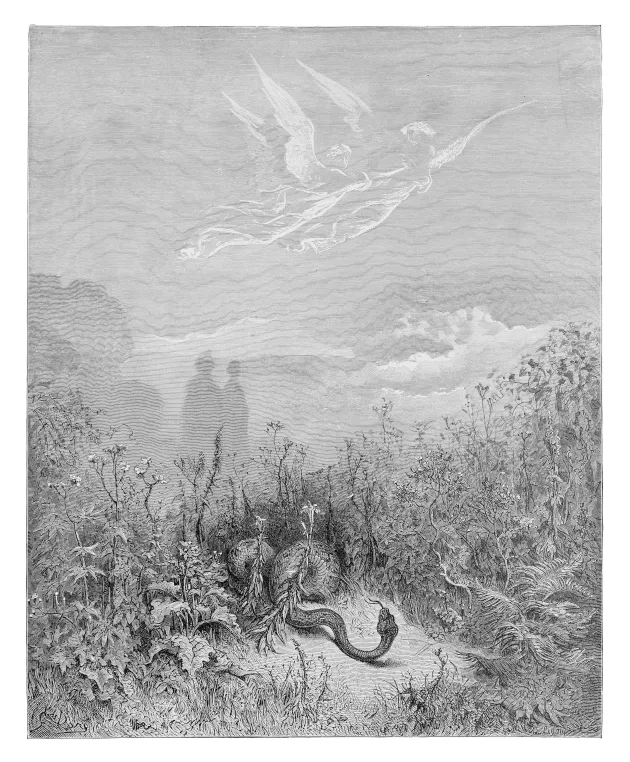
Truces were called during the American Civil War to pick blackberries
During the American Civil War, blackberry tea was said to be the best cure for dysentery. Temporary truces were declared throughout the conflict to allow both Union and Confederate soldiers to forage for blackberries. It was not completely successful however, as outbreaks of dysentery still plagued the soldiers throughout the war.
What is the scientific study of blackberries called?
Surprisingly, Batology is the name given to the study of blackberries. Chiropterology is the study of bats. Just to confuse you even further – a batologist is defined as someone who studies blackberries but is also frequently and probably mistakenly used a colloquial and humorous term for someone who studies bats.
Unripe blackberries are red, not green
Blackberry fruit are red in colour, rather than green, before they are ripe. There is an old expression that “blackberries are red when they’re green”.
Tradition also claims that the blackberry’s deep purple colour represents Christ’s blood and the crown of thorns was made of brambles.
What are the health benefits of eating blackberries?
Blackberries are high in Vitamin C, which boosts our immune systems. They may also have a variety of other health-giving properties from antiviral and anti-inflammatory properties to protecting against heart disease and even reducing the risk of cancer. Apparently, eating blackberries can also help you look younger, as blackberries are rich in anti-oxidants that promote the healthy tightening of tissue, making your skin less likely to sag or wrinkle.
But the health benefits of blackberries have long been written about. Not all of them could be said to be scientifically rigorous! According to English folklore, passing under the archway formed by a bramble branch can cure hernias, ruptures, pimples and boils. This has also been used as a remedy for “downer” cows, cows that for whatever reason are unable to stand.
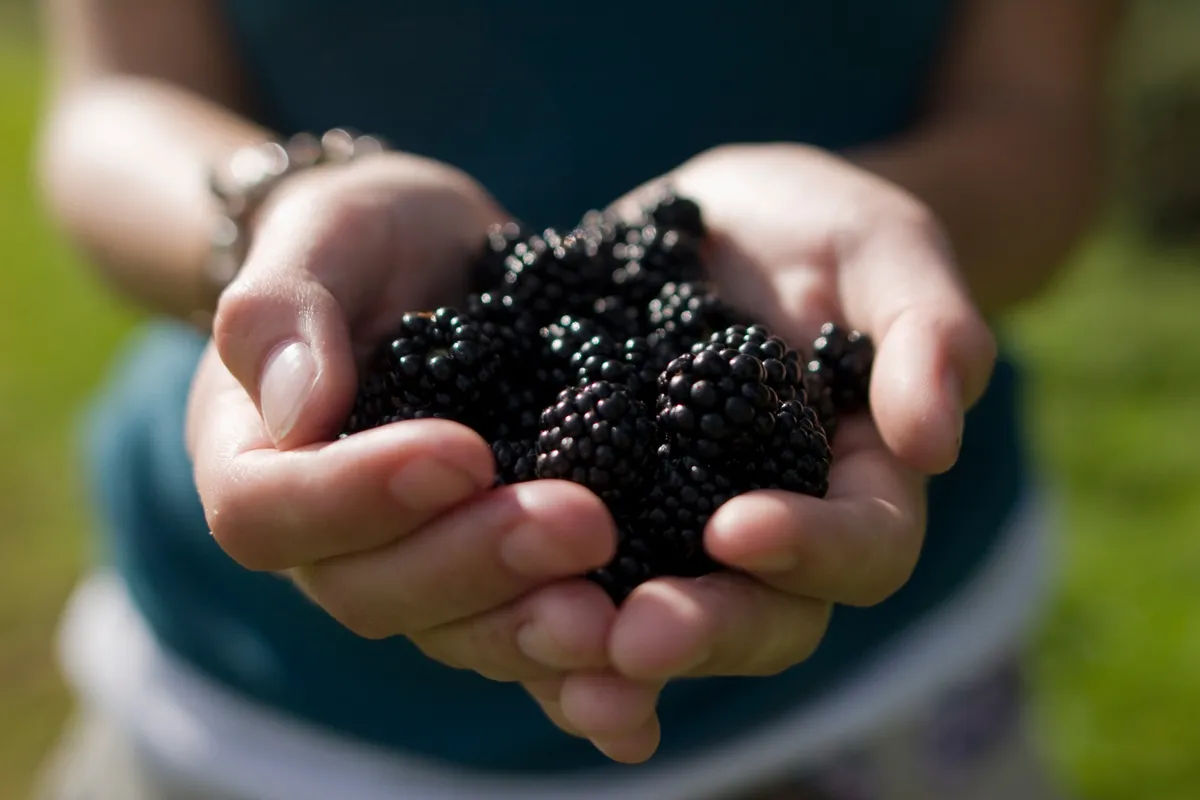
Blackberries have also be been used as hair dye with Nicholas Culpeper, an English herbalist from the 1600s, recommended the blackberry leaf to be used as hair dye. He advised that the leaves were to be boiled in a lye solution in order to “maketh the hair black”.
